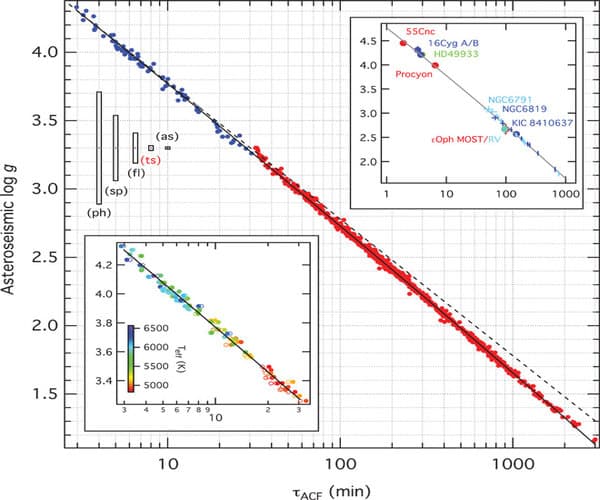New Gravity Measurement Method Might Help Detect Habitable Planets
In recent astrophysical and nuclear physics research, 'gravity' has played a major role in opening up a wide range of exciting new possibilities. Scientists have long faced difficulties to measure the 'surface gravity' (denoted by 'g'). Mathematically 'g' is proportional to the mass divided by radius squared and is usually expressed as 'log g'. This quantity is of great importance to scientists, and serves as an important feature of stars and planets. Be it knowing the stellar properties such as mass and radius, to calculating the size of an exoplanet and determining whether it orbits in its star’s habitable zone, the surface gravity plays a pivotal role in all of them.

Examples of the Kepler light curves of stars at different evolutionary stages
However, it is difficult to calculate its value up to desired accuracy, even using modern sophisticated instruments. Even NASA’s Kepler mission, boasting of an ultra precise photometry technique failed to measure the surface gravity value with sufficient accuracy resulting in many of the distant stars being too faint to be analysed with adequate precision.

Relation between asteroseismically determined surface gravity (log g) and ACF time scale
Scientists from the University of British Columbia (UCB), in collaboration with the University of Vienna have invented a method which has been able to successfully erase all these drawbacks. The new method, unlike its predecessors does not depend on the amplitude of brightness variations of the stars, but simply relies on the typical time scale of those variations. This new method resulted in determination of the value of surface gravity with a 4% accuracy. The new technique is the application of a modified relation between surface gravity and the characteristic time scale of the combined granulation and p-mode oscillation signal (reason for brightness variations in cold stars of low and intermediate mass). According to the research team, this new technique known as “autocorrelation function time scale techniqueâ€, can precisely determine the surface gravity value for most of the stars except dwarf stars, for which no detection technique is currently available.

Example of an "active" star

Example of a "Noisy" star
Jaymie Matthews of UCB confirmed that the new technique can give us vital information regarding the size and brightness of the star and whether a planet orbiting the star can support life. The team is hopeful that their research will help to find the Circumstellar Habitable zone i.e. an Earth-like environment. This might indeed revolutionize the quest for finding alien life, as explained by Thomas Kallinger, from the University of Vienna.
Source: #-Link-Snipped-#

Examples of the Kepler light curves of stars at different evolutionary stages

Relation between asteroseismically determined surface gravity (log g) and ACF time scale

Example of an "active" star

Example of a "Noisy" star
Source: #-Link-Snipped-#
Replies
You are reading an archived discussion.
Related Posts
I HEARD THAT THE UPSC BOARD WILL CHANGE THE IES 2016 MECHANICAL PATTERN?
PLEASE IF YOU KNOW REPLyY ME..
AND
I HAVE ANOTHER QUESTION IF I GET GOOD SCORE IN...
i am on my final's project on THE USE OF GREEN MATERIAL FOR CONSTRUCTION.
i would really love some eBooks,links and suggestions.
TechCrunch says that the remote control will vanish in the next 5 years. Apparently, we'll have all the devices connected with each others via IoT (Internet of Things) or auto-controlled...
Moscow Institute of Physics and Technology (MIPT), in collaboration with the Russian academy of sciences have developed a metamaterial from a planar periodic array of silver dimers that might incredibly...
GuangDa Li hails from China and is a first-generation entrepreneur in his family. A PhD from National University of Singapore, GuangDa has published over 19 international publications in video and...
